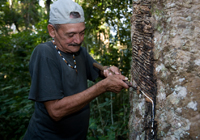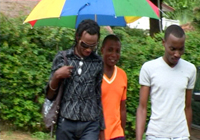
There is no doubt in the minds of health experts and activists that the official figures hugely underestimate the numbers of MSM living with HIV and newly acquiring HIV infection in Ukraine and elsewhere in the Region. Credit: UNAIDS/S.Dragborg
Judging by the official statistics, cases of HIV infection amongst men who have sex with men (MSM) in Ukraine, as in much of Eastern Europe and Central Asia, are so rare as to seem scant cause for concern.
“No statistics means no problem,” says Zoryan Kis of the All-Ukrainian Network of PLHIV (People Living with HIV). “The fact that the official numbers are very low is a danger for our work because we know that the epidemic exists but it is hidden.”
But there is no doubt in the minds of health experts and activists that the official figures hugely underestimate the numbers of MSM living with HIV and newly acquiring HIV infection in Ukraine and elsewhere in the Region.
In the 20 years since the first case of HIV infection was detected in Ukraine, only 158 MSM have been officially registered as living with HIV in a country with a total population of some 46 million people.
According to the 2007 UNGASS country report Ukraine has the most severe HIV epidemic in Europe, with just over 1.6 percent of the adult population estimated to be living with HIV. In 2007, 17,687 people were reported as newly infected with HIV, up 10 percent from 2006. Among them, the official number of new cases amongst MSM was just 48.
Together with the high degree of stigma attached to MSM in Ukraine, something the country shares with other countries in Eastern Europe and central Asia, this understating of the problem has contributed to authorities’ reluctance to back campaigns of prevention among MSM, activists say.
Beyond the official statistics, there is considerable data on MSM which paints a different picture. Various organisations, including UNAIDS, WHO and the International HIV/AIDS Alliance in Ukraine estimated that in 2006 there were between 177,000 and 430,000 MSM in the Ukraine, of whom between 3 and 15 percent of live with HIV, which is several hundred times the figure reflected in the official studies.
Most of MSM are not open. They would not go and say: ‘I have had sex with men’. They would say ‘I have had risky behaviour, I have been injecting drugs or even I have visited the dentist and I am worried
Zoryan Kis of the All-Ukrainian Network of People Living with HIV
Stigma and discrimination
Official HIV figures in Ukraine, as elsewhere in the region, are based on the results of voluntary HIV testing during which people should normally be asked why they have sought a test.
But in countries where MSM face widespread discrimination and where there is a high degree of stigma attached to male to male sex, there is understandable reluctance on the part of MSM to give the true reason.
“Most of MSM are not open. They would not go and say: ‘I have had sex with men’. They would say ‘I have had risky behaviour, I have been injecting drugs or even I have visited the dentist and I am worried,” says Kis.
And often officials do not press for answers. “I have been tested four or five times, but I have never been asked for my sexual orientation,” Kis adds.
According to the European Centre for the Epidemiological Monitoring of HIV/AIDS, only 1,828 cases of HIV infection in MSM have been officially reported between 2002 and 2006 years in the 15 former Soviet countries making up the World Health Organisation’s Eastern European health region.
Turkmenistan and Tajikistan, report none, while Azerbaijan has only 10 and Belarus 29. The highest number is reported by Russia; but its 1,245 cases over the 5 years compares with more than 38,000 in Britain and 11,000 in Germany in the same period, countries with smaller overall populations.

Prevention services for MSM have improved in the last few years, but they remain significantly inadequate to impact and sustain behavioural change and thus reduce HIV transmission among this group of men in Ukraine.
Credit: UNAIDS/P.Carrera
Ambitious goals
In 2006, Ukraine set ambitious national goals for scaling up towards universal access to HIV prevention, treatment, care and support for groups at high risk of HIV. However, HIV prevention activities in the Ukraine, as in most of the rest of the region, are carried out by NGOs with financial backing from international donors, mainly the Global Fund for AIDS, Malaria and Tuberculosis.
For example, a two-year project called “Men Who have Sex with Men: HIV/STI Prevention and Support” was implemented in Kiev by the AIDS Foundation East-West, the Gay Alliance NGO and Noah’s Ark-Red Cross Sweden, with financial support from the Elton John AIDS Foundation amongst others.
The International HIV/AIDS Alliance in Ukraine, which is co-holder of the Global Fund grants, is currently undertaking 14 projects aimed at HIV prevention among MSM. They include outreach services, provision of information and education around HIV and sexually transmitted infections (STIs), behavioural change communication, promotion of safer sex, condom and lubricants distribution, counselling and rapid-testing for HIV, testing and treatment of STI, self-help groups and anti-stigma trainings.
“The scale and scope of prevention services for MSM has improved in the last few years, but they remain significantly inadequate to impact and sustain behavioural change and thus reduce HIV transmission among this group of men in Ukraine,” says Dr. Ani Shakarishvili, UNAIDS Country Coordinator in Ukraine.
The situation is similar elsewhere in Eastern Europe and Central Asia. For example, there are no state-funded HIV prevention programmes for MSM in Russia.
“Governments everywhere are reluctant to spend money on sex workers, on drug users, but MSM comes at the top of the reluctance list. It is probably the last programmes that the governments will start,” says Roman Gailevich, UNAIDS Regional Programme adviser.

The new programme marks an encouraging change of stance by the government.
Credit: UNAIDS/S.Dragborg
For the first time
Under pressure from international donors and an increasingly vocal and better organised local MSM community, the Ukrainian Government recently agreed to include and set targets for HIV prevention and treatment for MSM as a priority in its National AIDS Programme for 2009-2013.
“This change stems from comprehensive surveys in the community which show the real role of MSM in the HIV epidemic in Ukraine,” says Anna Dovbakh, head of team: policy & programme development at the International HIV/AIDS Alliance in Ukraine.
“Since 2005, activists of the LGBT (Lesbian, Gay, Bisexual and Trans-sexual) community have become more active and professional in their HIV advocacy and response,” she adds.
Activists and health experts say that the new programme, which is currently before the Parliament, marks an encouraging change of stance by the government.
But the jury is out on what real difference it will make, not least because the money for HIV prevention will continue to come from the Global Fund and other donors.
“The lack of Governmental commitment to provide resources, support and services for MSM and to address the existing legal, financial and administrative barriers to service access for MSM indicates that the Government of Ukraine is still not fully prepared to address the HIV epidemic in MSM,” says Shakarishvili.
Back to top





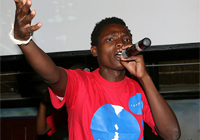




 China announced in 2008 plans for an extensive programme to tackle sharply rising rates of HIV amongst men who have sex with men (MSM)
China announced in 2008 plans for an extensive programme to tackle sharply rising rates of HIV amongst men who have sex with men (MSM)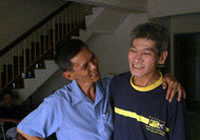


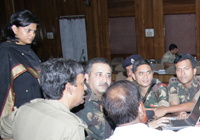
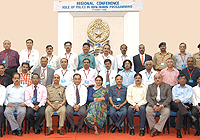




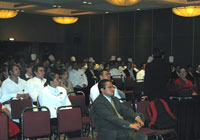 UNAIDS is involving the Mexican hotel industry in a prevention campaign around the International AIDS Conference in August 2008 and in the longer term through the development of sustainable long term HIV workplace policies & programmes Photo: UNAIDS/R.Castillo
UNAIDS is involving the Mexican hotel industry in a prevention campaign around the International AIDS Conference in August 2008 and in the longer term through the development of sustainable long term HIV workplace policies & programmes Photo: UNAIDS/R.Castillo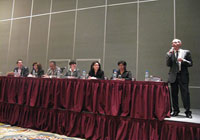 A first inaugural meeting of all the participating hotels took place at the Hotel Marquis in Mexico City on July 4th 2008. Photo: UNAIDS/R.Alion
A first inaugural meeting of all the participating hotels took place at the Hotel Marquis in Mexico City on July 4th 2008. Photo: UNAIDS/R.Alion Condoms will be distributed at all participating hotels via the “condom project” which has been financed with the generous support from UNFPA. Photo: UNAIDS/R.Castillo
Condoms will be distributed at all participating hotels via the “condom project” which has been financed with the generous support from UNFPA. Photo: UNAIDS/R.Castillo